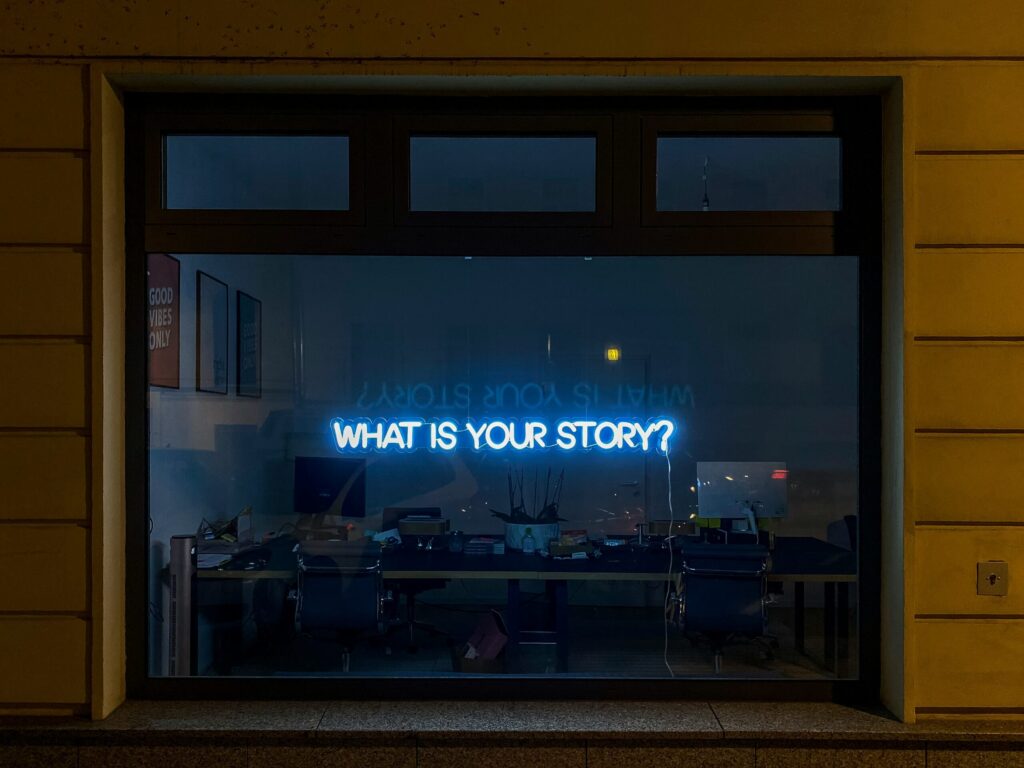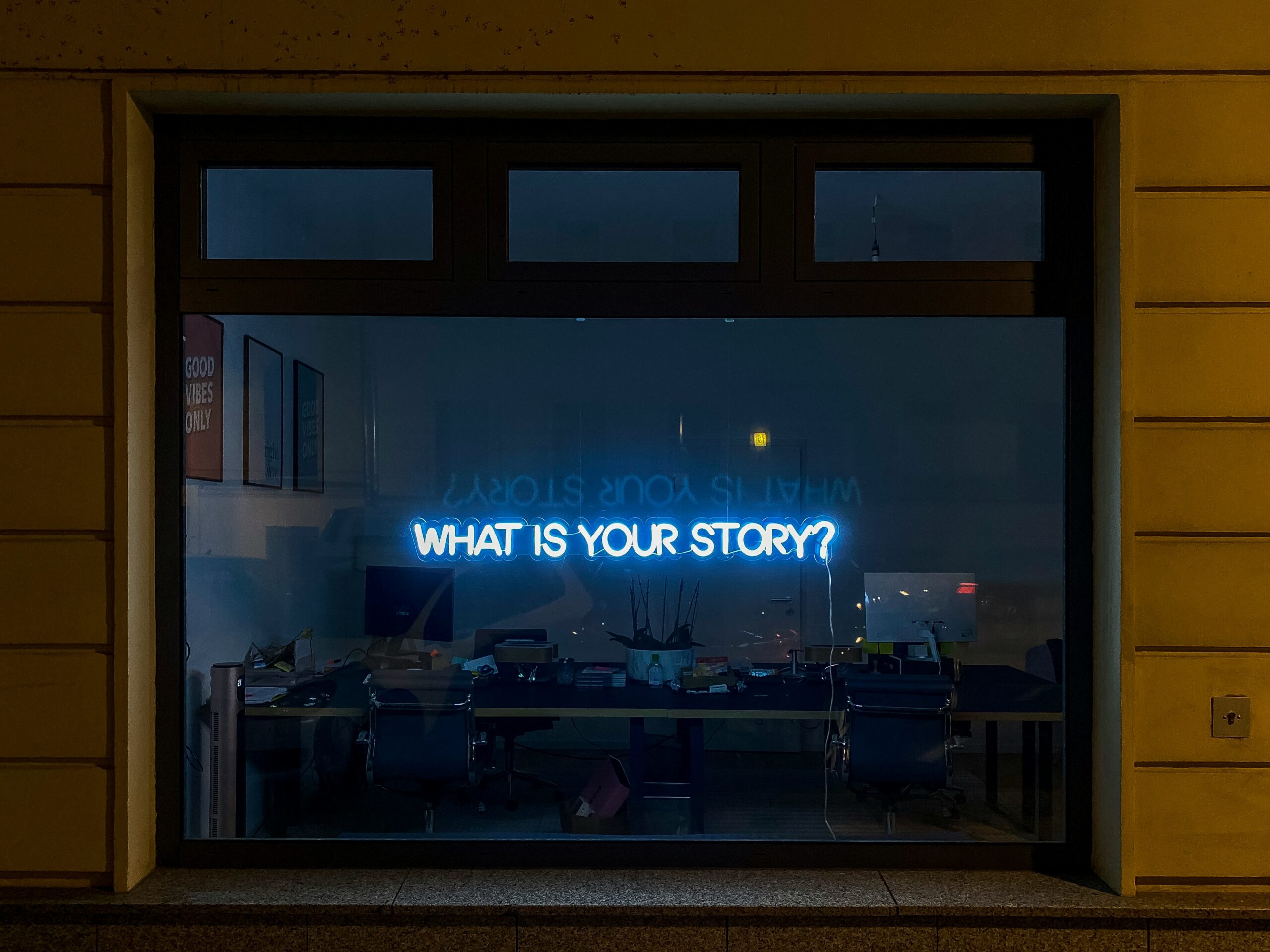I’ve been listening to books on storytelling recently, including three I recommend highly.
Book 1: How to Tell a Story
First: How to Tell a Story is by the team from the Moth Radio Hour. Seek that show out, if you’re not familiar with it. Among the takeaways… strong stories have:
- A change or transformation. Show how the events of the story changed things, changed you.
- Stakes. Why should the listener care.
- A strong start and ending. No “so, yeah” at the beginning. No “uh, well, that’s it I guess” at the end.
And when telling a story on stage, look for the sweet spot between memorizing and improvising. Know your story arc, what details you want to include or leave out, where you want to speed up or slow down.
But memorize only the opening and ending. Beyond that, memorizing can make you sound unnatural. And if you lose your place in something you memorized word for word, recovering is hard.

Book 2: Stories that Stick
Second, Stories that Stick, by Kindra Hall, provides a framework for how to approach storytelling. Her tips:
- have a recognizable character,
- use vivid and relatable details to connect to your audience,
- bring in genuine emotion,
- and identify a turning point (the change or transformation mentioned above)
Stories that Stick then explains how most businesses have four main stories to tell: the value story (what’s the value of the product), the founder’s story (how did it all start), the purpose story (vision and values), and the customer story (testimonials). Each one serves different purposes.
Given how good those two books were, did I really need another five-star book about storytelling?
Yes, yes I did.
I found that the lessons from each book complement the lessons from the others. Combined, they made a powerful course in storytelling. And it sure doesn’t hurt that all three books feature engaging stories as examples.
But the third book I read, Storyworthy, by Matthew Dicks, might be my favorite.
Even better: it gave me a rule of thumb that I’m already putting into practice. (I thought I was already following it. I wasn’t.)
Book 3: Storyworthy
So many of us were taught to think of an academic style as “good writing.” It’s how we learned to write essays for school.
Problem is, it can be a little boring.
In the Book Academy, Luvvie Ajayi Jones encouraged students to ditch the scholarly tone. “Write like you talk,” Luvvie said.
And sure enough, whenever someone set aside their fancy word choices and just wrote as if they were speaking, their writing came alive.
I already have a pretty conversational style of writing, so I thought I had this covered. But, in Storyworthy, Matthew Dicks takes this a step further. He calls it the “dinner test.”
With the dinner test, you’re not just writing like you talk. You’re telling your story the way you’d tell it around the dinner table with friends.
So now, as I write, I keep going back to imagine saying all this to you. Does it sound like something I’d say? I’m surprised by how often the answer is no.
Storyworthy recommends another practice I plan to adopt. The author calls it “homework for life.”
Homework for life consists of pausing at the end of each day for ten minutes to identify any “story worthy” moments that happened during the day. Just jot down enough to remember what the story is. You can also make a note of anything that happened at another time but which you happened to remember in that moment.
This practice can build a list of stories worth telling, which is great. But even more than that, it can get you to pay more attention to small moments in your life that might be worth remembering.
Matthew Dicks suggests that since he’s been practicing this habit, he’s had a sense of life not passing him by so quickly. That alone makes it a worthwhile practice for me, even if I never use the resulting list as a source for stories.
Have you read any of these books about storytelling? Are you incorporating storytelling into your work or your life? What have you found useful when crafting your stories?

